Have you ever wondered about the best way to store film? Is it essential to keep it in the fridge, or can you leave it on the shelf? If you’re looking for an answer to these questions, then this complete guide on Should You Keep Film in the Fridge is just what you need! With useful tips and information from experts, this guide will help you understand exactly how to preserve your precious film.
Storing Film at Home
If you’re storing film at home, a cool dark place is recommended. Don’t let the temperature get too hot or cold as this can cause it to lose its quality. Most people don’t keep their film in the refrigerator, but some still opt for this method if they live in extreme climates and have no other option.

Storing your film in the refrigerator has both pros and cons. On one hand, it will help protect your film from direct sunlight and extreme temperatures. On the other hand, it may suffer from condensation which could ruin the emulsion on your film.
Put your film in the fridge
If you want to make sure that your film stays in good condition for as long as possible, then it may be a good idea to keep it in the fridge. This is because putting film in the fridge can help reduce exposure to light and moisture, which can affect the quality of your photos. It also helps to keep dust and dirt away from your films.
- When keeping film in the refrigerator, however, there are some precautions you should take:
- Make sure that the temperature is between 35-45°F (2-7°C). The humidity should also be kept low (around 40%).
- Wrap the film tightly with an airtight seal so no condensation will form inside while the film is in the refrigerator.
- Store them away from food and other materials that can emit odors, as these can be transferred to your film and cause a loss of quality.
- Keep the films in their original packaging or an airtight bag so moisture doesn’t get in and cause spots on your photos.
- Check that you don’t leave them in too long – no more than 3 months! After this time, it’s best to remove them from the fridge for a few days before using them.
If you follow these tips, then you should find that keeping your film in the fridge helps preserve its quality for longer periods of time – giving you beautiful shots every time!
Use the freezer for long periods of no-use
When film is stored in an environment that is too warm or humid, it can have a negative impact on its chemical composition. The same applies also when the film has not been used for several weeks or months. If you don’t plan on using your film for more than two weeks, consider storing it inside your freezer instead. This will allow you to store the film away from changing temperatures and humidity levels that could be harmful to its chemical structure.
Before placing the film in the freezer, make sure that you wrap it up tightly in a moisture-proof material such as aluminum foil. Once wrapped up, place the package of film into a zippered plastic bag before putting it into the freezer. When you are ready to use the film again, take it out of the freezer and allow it to thaw slowly at room temperature before using it. This will help ensure that you photos turn out clear and crisp!
As always, make sure to follow the manufacturer’s instructions for proper storage of your film. Doing so will help keep your photos looking their best!
Beware of condensation
If you’re going to keep your film in the refrigerator, it’s important to make sure that there is no condensation. Condensation occurs when warm temperatures come into contact with very cold objects, such as film stored in a refrigerator. If moisture collects on the surface of your film or develops between layers of the emulsion, it can cause spots and streaks on your images. To prevent this from occurring, be sure to package your film in an airtight container before placing it in the fridge.

Don’t leave exposed film roll in the camera when you are finished
When you are done shooting with film, it’s important to unload the camera as soon as possible. It is not recommended to leave exposed film in the camera for more than a couple of hours because heat and moisture can damage it. Unloading the film immediately after you have finished shooting will also ensure that you don’t accidentally expose the roll to light while trying to reload it into another camera.
Don’t break the seal until you have to
Tips for storing photographic film
- Always store photographic film in a dark, cool location. The ideal place to keep film is in the fridge as this prevents it from being exposed to light and the temperature changes of other locations.
- Make sure that you put your film into an airtight container or bag before storing it in the refrigerator, this will protect it from any potential contaminants such as moisture, food odours or dust particles.
- If you are using a foam-lined plastic container for storage, make sure that there are no sharp edges inside which could damage your film during movement.
- Once you have placed your photographic film in its protective packaging, make sure that it does not come into contact with any food items as this can cause the film to become contaminated.
- When you take your photographic film out of the refrigerator, allow it to come up to room temperature before opening the container or bag. This will help prevent condensation on the film which can result in light leaks and fogging.
- Whenever possible, try to use refrigerated storage for any film that is going to be exposed for a long time such as slides or negatives – this will help preserve their quality over time.
- Take extra care when handling old photographic films as they may be more susceptible to damage from mishandling than newer stocks of film.
Follow these tips and you should have no problem keeping your precious photographs safe and sound! With these tips, you will be able to keep your film in the best condition possible.
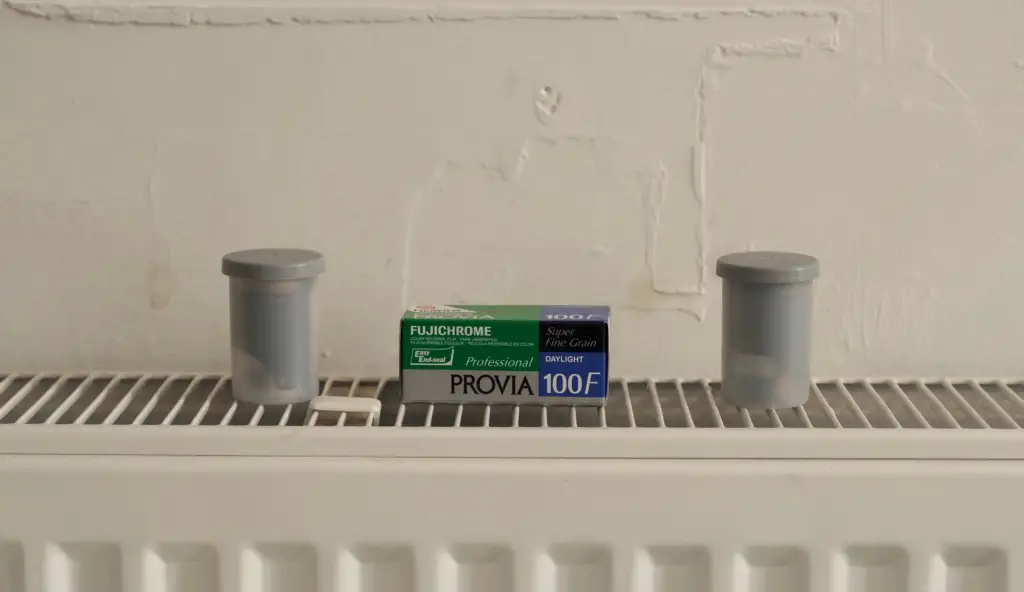
Film in the Fridge
Although storing your film in the refrigerator is the preferred method for preserving its quality, there are a few things to consider when deciding between refrigeration and room temperature storage.
If you plan on using your photographic film within a few months of purchase, it can be safely stored in either location. However, if you intend on keeping it for longer periods of time or if you need to process it quickly, then refrigeration is the better option as this will help protect against degradation caused by environmental factors such as heat and humidity.
On the other hand, if you live in an area with low temperatures and humidity levels (such as in some parts of Canada), room temperature storage may be sufficient for long-term storage.
Although refrigeration may provide better protection against environmental factors, it does come with its own set of challenges. Since the refrigerator is a much colder environment than room temperature, you must take extra care to make sure that condensation does not form on your film when taking it out of the fridge and allowing it to warm up. If moisture is present on the film, this can cause light leaks or fogging which will ruin the image quality.
Head to the Freezer for Long-term Storage
If you are looking to keep your film for a long period of time, the best place to store it is in the freezer. This will ensure that your film stays safe from any potential heat and humidity-related damage. It’s important to note, however, that you should never directly freeze an exposed roll of film; doing so may cause it to expand and contract too quickly, resulting in irreparable damage. If freezing your unexposed rolls of film, make sure that they’re stored inside airtight and water tight containers — preferably ones designed specifically for storing photos or film. If you don’t have access to those kinds of containers, be sure to wrap them tightly with plastic wrap or foil before sealing them in an airtight container and putting them in the freezer.
When it comes time to use your film, you’ll need to make sure that you give it sufficient time to warm up before opening it. If you open a roll of the frozen film too quickly, moisture can condense on its surface and cause damage. Make sure to take your film out of the freezer at least 24 hours before using it, allowing enough time for it to thaw properly. It’s best practice also to keep your film away from direct sunlight or other sources of heat while it’s defrosting, as this could lead to fogging and discoloration.
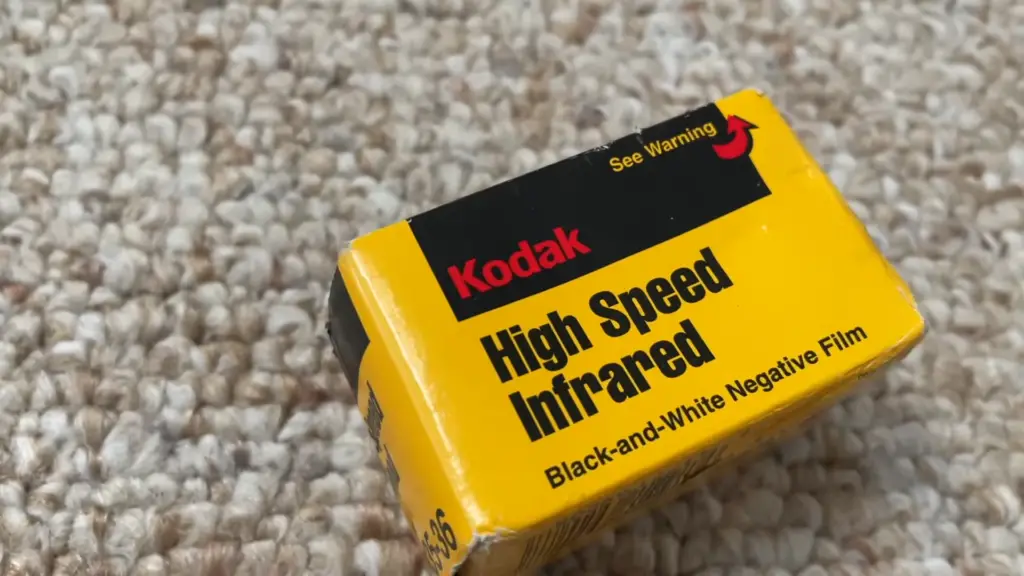
Finally — be aware that due to the extreme cold temperatures, the emulsion on your film may become brittle or even crack. It’s best to handle a frozen film with extra care and try to avoid bending it in any way. If you follow all of these precautions, you can be sure that your film will remain safe for long-term storage in the freezer.
Warm-Up your Film after Cold Storage
When it comes to storing film, the refrigerator is a great option. It can keep your film safer for longer and will prevent it from overheating. However, if you do choose this method, there are important things that you must remember.
The most important thing to note is that after taking the film out of the cold storage (refrigerator or freezer), it needs time to warm up again before you can use it. This means that once you take the film out of the cold storage, leave it in a room-temperature environment for at least half an hour so that its temperature can adjust back to normal before inserting it into your camera.
If you’re using film that has been stored in a refrigerator or freezer, make sure to give it some time to warm up properly before inserting it into your camera.
If you need more info on storing film, including what type of container is best for keeping film safe in cold storage, check out our full guide on Should You Keep Film in the Fridge. You’ll find lots of helpful tips and information about how to store your film correctly so that it doesn’t get ruined!
Protect your Film from Extreme Heat
When storing your film, protection from extreme temperatures is key. Keep it out of direct sunlight and away from high-heat sources like radiators or steam pipes. Don’t leave it in a car trunk in summer! Heat can cause the film emulsion to melt and damage the images. Similarly, cold temperatures can ruin the film as well; keep film away from freezers and other cold places.
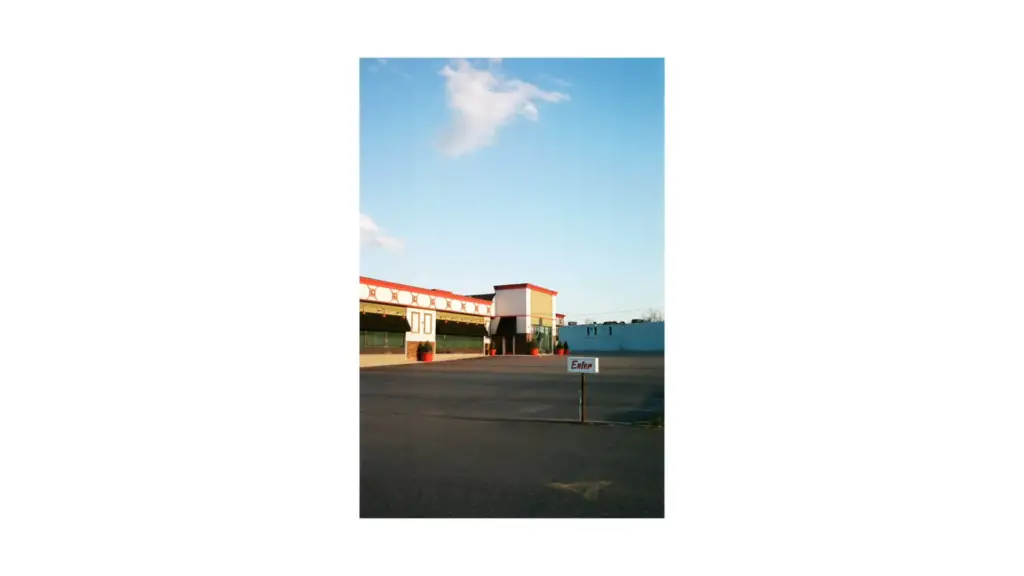
If you need to store your film for a long time, it is best to keep it in a refrigerator. The temperature inside will stay consistent and protect the film from external weather conditions since most refrigerators are kept indoors. But still, make sure not to let it freeze — have an alarm set on your fridge if you need to be extra sure.
Another thing to consider is humidity; most film comes with a protective seal that prevents moisture from getting in and ruining the film emulsion. If it gets too humid, this seal can fail, so having your camera in a cool, dry place is ideal.
When you load it, Finish it
When you’re dealing with film, it’s important to make sure that you finish what you start. If you open your film canister and start loading the film into your camera, make sure that you use all of the exposed frames before opening a new canister. That way, each roll of film will be used together in one session, and its temperature won’t shift too much from beginning to end. This helps ensure consistent results across the entire roll.

Develop it
Now that you know the answer to “Should You Keep Film in the Fridge?”, let’s look at proper storing and developing techniques. When developing film, it is important to use a darkroom or changing bag. This prevents any light entering the area which can damage your photos. It is also important to make sure that you are working in an environment with a constant temperature of 68-72°F (20-22°C). If temperatures rise above this range, there can be an adverse effect on your film and may cause fogging or other damage.
When storing your film, always keep them away from direct sunlight, extreme heat or coldness, strong chemicals such as those found in household cleaners, and high humidity. If you need to store your film for an extended period of time, then it is best to keep them in a cool dark place such as the fridge. However, make sure that the temperature in the fridge stays constant at around 37°F (3°C) or lower; any higher and condensation will occur which can ruin your film. [2]
It is also important to make sure that your film is kept away from strong magnetic fields which can cause fogging or other damage. Therefore, always make sure to store our film away from sources like microwaves, TVs, speakers, etc.
Finally, if you plan on storing your negatives for a long time, consider investing in an archival storage box. These are airtight and designed to protect your film from dust, dirt, and other contaminants. You can find these at most photography stores or online.

FAQ
Should you always store film in the fridge?
Not necessarily. It’s best to store film in a cool, dry place away from direct sunlight and heat sources. When stored correctly, film generally doesn’t need to be refrigerated unless it’s been exposed to excessive heat or humidity for a long period of time. While storing your films in the fridge can help extend their life, it is not always necessary. [3]
Do you keep 35mm film in the fridge?
When it comes to storing 35mm film, there is a lot of debate about whether you should keep it in the fridge or not. The answer isn’t as straightforward – some experts believe that keeping your film in the refrigerator can help preserve its quality, while others argue it could actually do more harm than good.
In general, if you’re going to use your 35mm film within 2-3 weeks of purchasing it then there is no need to refrigerate it – just store it at room temperature and away from direct sunlight. However, if you plan on using your film after this period then it’s best to keep it in the fridge since cold temperatures slow down the chemical reactions which cause negative effects over time. This will also help prevent condensation forming on the film which can lead to visible defects when developing.
You should only take out the amount of film you need each time – as soon as you open it up to air, frost or moisture will start accumulating on the film and this could cause damage too.
Overall, whether or not you decide to keep your 35mm film in the fridge depends on how quickly you plan on using it. If it will be used within 2-3 weeks then there’s no need to refrigerate it, but if you plan on using it after this period then it’s best to keep your film in the fridge. Ensure that it is sealed properly and away from any strong-smelling foods for optimal results!
Should film be kept cold?
When it comes to film storage, the most important factor is temperature. Temperature control is essential because extreme temperatures can cause physical changes to the emulsion layer on film. This could be anything from cracking and warping (from heat) to cloudiness and fading (from cold).
The ideal temperature range for storing color negative and black-and-white negative films in packages is 13˚C – 18˚C (55°F – 64°F). Generally speaking, if you keep your film within this temperature range, it should remain stable over time. It’s also important that humidity levels stay between 30% – 50%. You may need to use a dehumidifier or air conditioner if the humidity levels are too high. [4]
Storing your film in the refrigerator is far from ideal, as it can cause condensation to form on the surface of the film and attract dust particles. It can also lead to a change in color balance over time, especially when stored for long periods of time. If you do store your film in the fridge, make sure that it is well sealed and not exposed to any drastic temperature changes.
Ultimately, if you want to ensure that your film remains stable for longer periods of time, it’s best to keep them at room temperature or slightly above within their recommended temperature range. That way you can be sure that they won’t suffer from any physical damage due to excessive heat or cold. Proper storage will help preserve the colors and tones of your photos for years to come.
Can you put undeveloped film in fridge?
Absolutely! In fact, keeping your film in the fridge is one of the best ways to ensure it stays in good condition for a longer period of time. A refrigerator helps keep your film away from humidity and extreme temperatures that could potentially damage it. It also reduces the chances of accidental exposure to light. [5]
Store your undeveloped film properly before placing it in the refrigerator. Place the rolls inside sealed plastic bags or airtight containers to prevent them from picking up any odors or flavors of food items stored nearby. Ensure you label each roll with its expiration date so you know how long they can last in cold storage, as some films are more sensitive than others and may need to be used sooner.
Keeping film in the refrigerator is a great way to ensure it’s fresh and ready for use whenever you need it! Just remember to store it properly and label each roll with its expiration date before you store them away.
Useful Video: Whats in my Film Photography Fridge – How to store film for film photography
Conclusion
It is not necessary to keep film in the fridge, but there are some benefits to doing so. Keeping your film in a dark, dry and cool place will help it last longer and be of better quality. Additionally, if you have been storing your film at room temperature for an extended period of time and want to ensure its best quality, putting it in the fridge can bring back that freshness.
However, it is important to note that keeping film in the refrigerator should always be done carefully. Extremely cold temperatures can damage the emulsion on the film surface which will make them unusable. Therefore, when storing your films in the fridge make sure they are sealed tightly to avoid condensation and water damage as well as protect them from the cold.
Ultimately, it is up to you to decide whether or not to keep your film in the fridge. Good luck!
References
- https://carmencitafilmlab.com/blog/everything-you-need-to-know-about-refrigerating-and-freezing-film/
- https://thedarkroom.com/tips-for-storing-photography-film/
- https://thephotographyprofessor.com/should-i-store-film-in-the-fridge-or-freezer/
- https://www.canada.ca/en/conservation-institute/services/conservation-preservation-publications/canadian-conservation-institute-notes/care-black-white-photographic-negatives-film.html
- https://www.learnfilm.photography/the-proper-way-to-store-film-and-what-happens-when-you-dont/





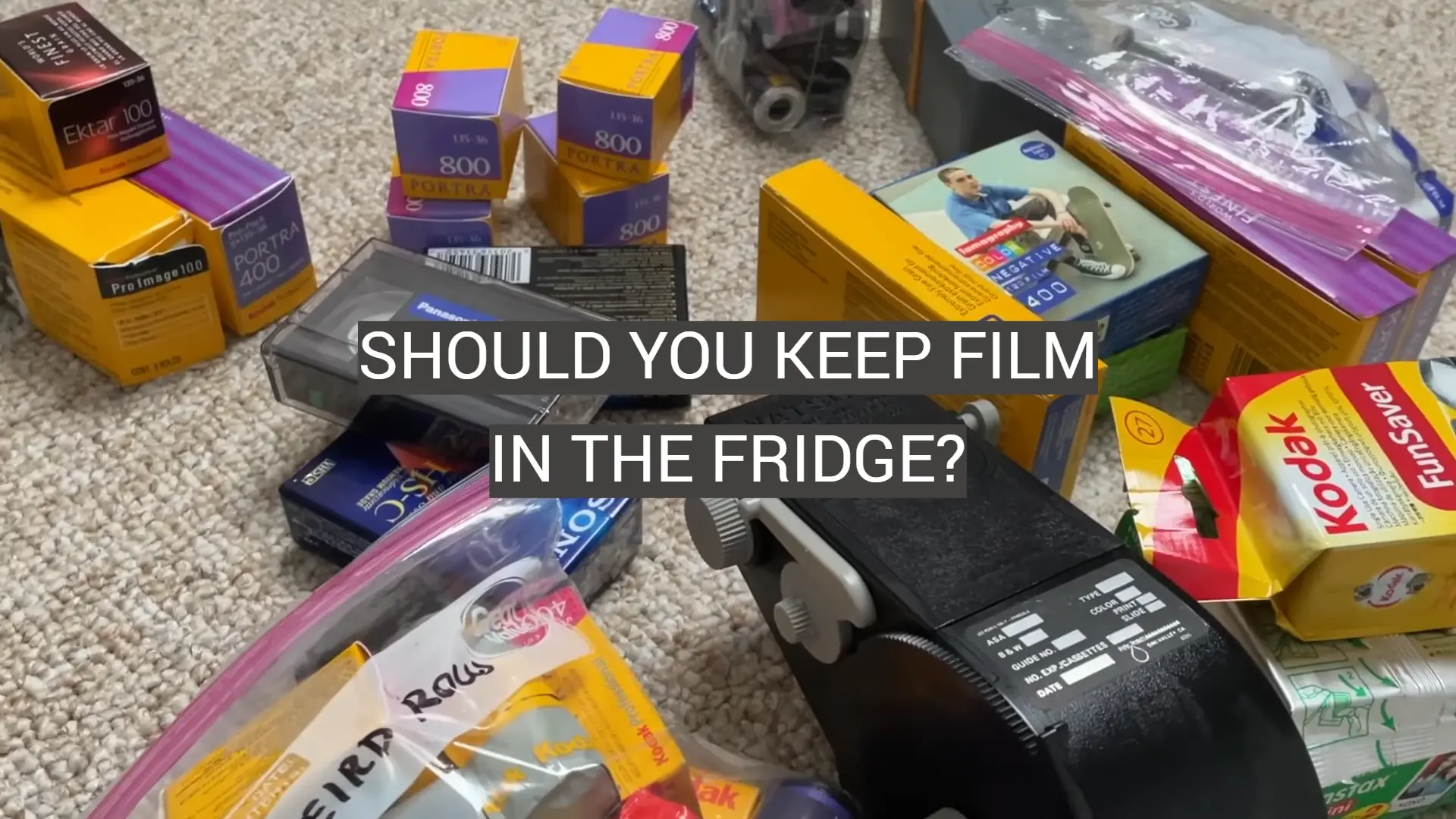
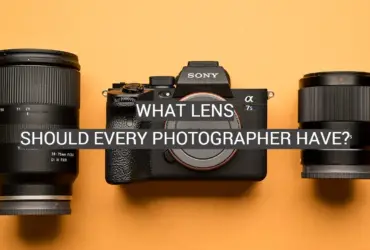





Leave a Reply